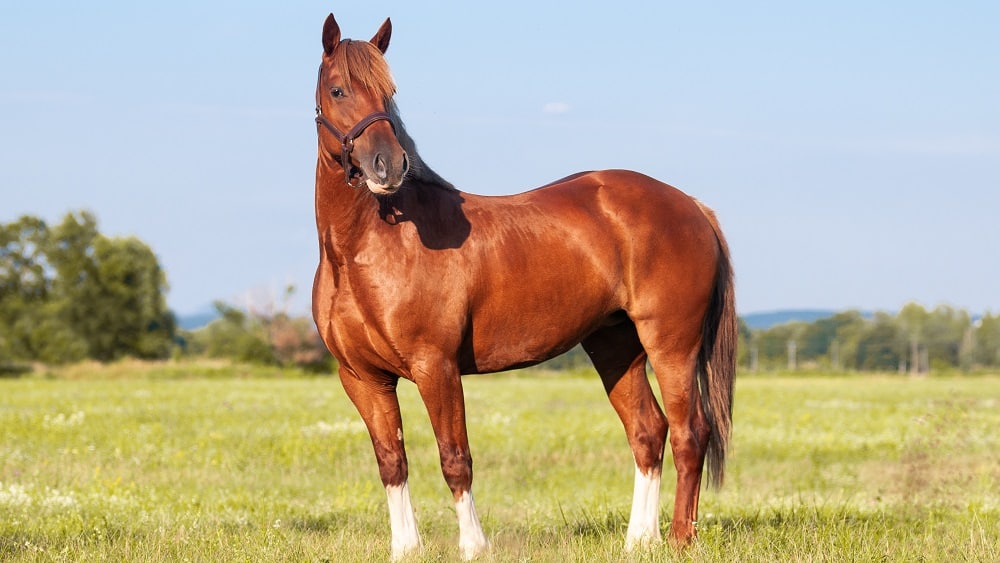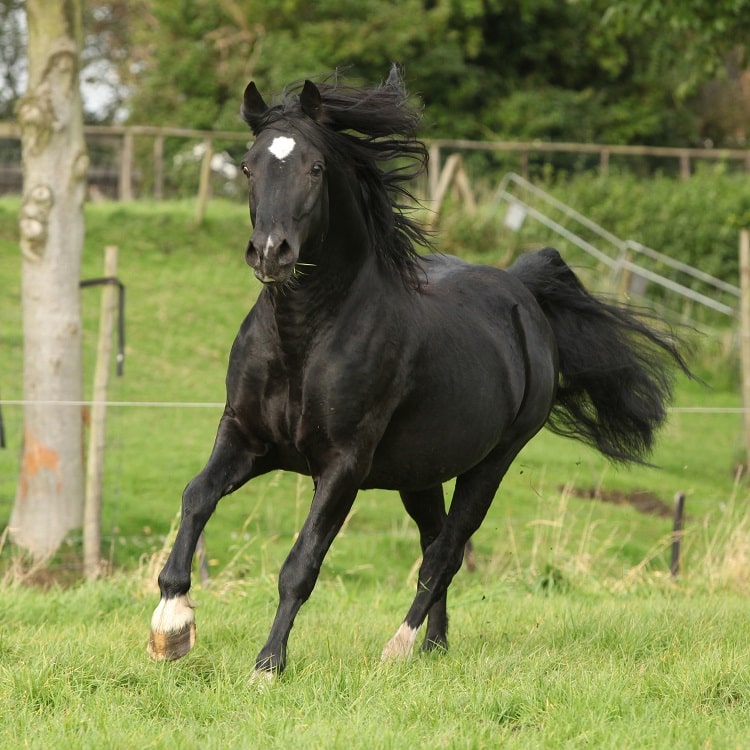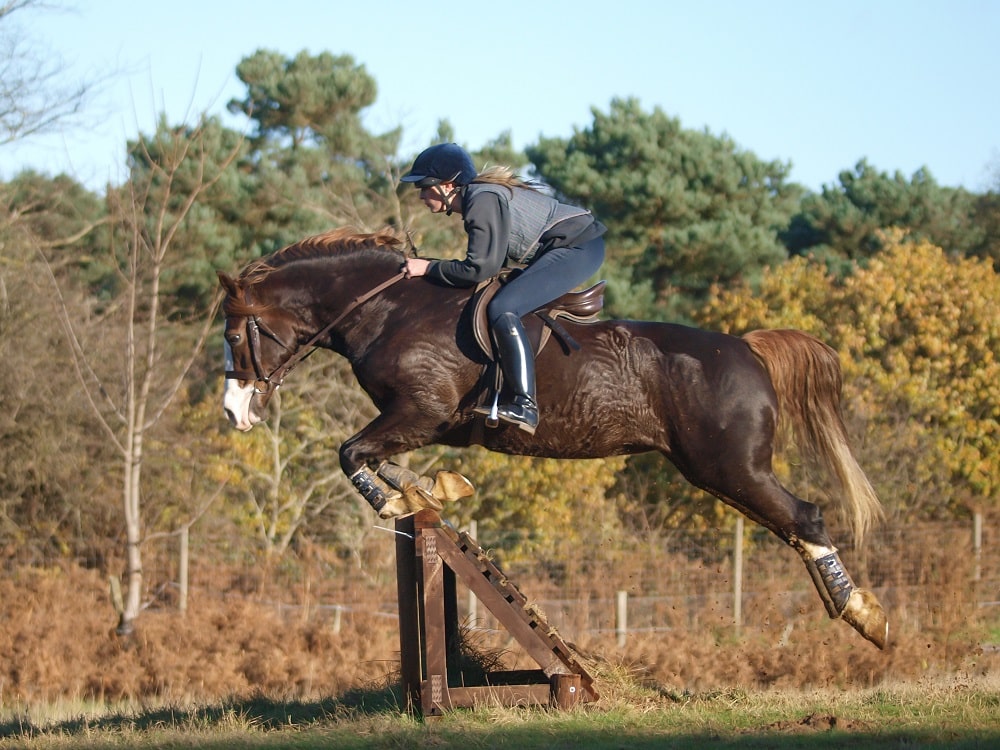
Vital Stats
| HEIGHT: | 13.2hh or taller |
| BEST FOR: | Leisure riding, harness driving and more |
| ORIGIN: | Wales |
Order now for delivery on Tuesday 2nd December
The hardy Welsh Cob is a Welsh horse breed with stamina, intelligence and versatility. Around for centuries, today the Welsh Cob is popular in both the UK and the US, with Welsh Pony and Cob societies present in both countries.
The Welsh Cob is a member of the four-strong Welsh Pony and Cob group of breeds. It is the tallest of the group; and is known for its hardy nature and gentle temperament. Also included in the Welsh Pony and Cob group of breeds are the Welsh Mountain Pony (Section A), the Welsh Pony of riding type (Section B), and the Welsh pony of Cob type (Section C) – each of which can be used for a different purpose.
As the tallest of the group, the Welsh Cob is suitable for adult horse riding, and is the Section D member of the group.


| HEIGHT: | 13.2hh or taller |
| BEST FOR: | Leisure riding, harness driving and more |
| ORIGIN: | Wales |
Welsh ponies have roamed the countryside of Wales for centuries (with some evidence putting their origins as far back as 1600 BC), living in rural areas such as mountains and moorland. This rural lifestyle resulted in a hardy Welsh horse breed, and while the majority of Welsh ponies are no longer semi-feral, a group of wild ponies still lives in the mountains of Snowdonia.
The Welsh Cob as a type of pony dates back to the Middle Ages, when they were used for work in agriculture; over the years, they have been mixed with horse breeds including Arab, Thoroughbred, and Hackney.
Welsh Cobs and ponies survived an order from Henry VIII to destroy all horses under a certain height (15 hands for stallions and 13 hands for mares) in a bid to improve horse breeds, and over time they became a staple in their homeland of Wales, where they were put to good use. For farming families, they were ploughmen, drivers and riding ponies; they were also put to work in the coal mines; and were used as a mode of transport for everyone from doctors to businessmen.
The Welsh Pony and Cob Society was founded as a breeder’s association in 1901, followed by the first stud book in 1902. The association introduced varying sections for Welsh ponies and horses, divided by height and weight. Originally limited to Section A type ponies, the sections were adjusted over the years before being finalised in 1949. Today, the Welsh Pony and Cob Society includes: Section A (the Welsh Mountain Pony), Section B (the Welsh Pony of riding type), Section C (the Welsh Pony of Cob Type), and Section D (the Welsh Cob).
Welsh ponies and cobs can also be found in the US, where the American Welsh Pony and Cob Society was founded in 1906.
The Welsh Cob is the tallest of the four types of horse in the Welsh Pony and Cob Society, with a minimum height of 13.2hh.
The Welsh Cob, as with the other ponies in the Welsh Pony and Cob Society, can be any solid colour with the exception of tobiano and leopard-spotted. Common colours include black, chestnut and bay; grey is also common in Welsh ponies, however less so in the Section D Welsh Cob. Palomino Welsh Cobs also exist, as do buckskin Welsh Cobs.
Tall and stocky, the Welsh Cob may be the tallest of the four Sections, however it still displays shorter legs and a pony-like head.
The Welsh Cob is a hardy equine, and as with other Welsh ponies they will enjoy a pasture situation. It can also be beneficial to keep an eye on their sugar and carbohydrate intake to avoid issues such as laminitis.
Its hardiness is one of the Welsh Cob’s defining characteristics: after years of semi-feral rural living, this Welsh breed is well used to living outdoors. Its size sets the Welsh Cob aside from its fellow Welsh ponies, as it is both taller and stockier.
Welsh ponies are also known to be friendly and trustworthy, with great stamina and soundness.
This Welsh horse breed displays a bold movement with a powerful trot; they are also fast trotters. In fact, ponies were often selected by business and tradesmen based on how quickly they could trot the 35 mile uphill route from Cardiff to Dowlais, favouring those who could do it in less than three hours without a break.
Welsh ponies are known to be an even-tempered breed. They are intelligent, friendly, trustworthy and spirited, making them popular for a range of uses such as riding (for both adults and children), work, and competition.
With a hardy disposition, the Welsh Cob – like its fellow Welsh ponies – is not prone to a large number of equine conditions or illnesses. They can be susceptible to laminitis, so sugar and carbohydrate intake should be monitored and not overdone.
Due to the feathering on its legs, the Welsh Cob should also be groomed regularly to avoid skin conditions flaring up.
The Welsh Cob is a low maintenance horse breed, and typically requires a standard equine grooming regime. Care should be taken to keep the feathering on their legs clean to avoid any common skin conditions.
The typical lifespan of a Welsh Cob is up to 35 years.
With their even temperament, intelligence, stamina, and hardiness, the Welsh Cob is a good choice for a range of purposes. Its height makes it a good option for both adult and children’s riding (its fellow Section A and B ponies are better suited to children), as does its gentle and steady nature.
In the past, Welsh Cobs were used for a wide variety of jobs such as coal mining, as war horses, as farm horses, and for transport. Today, Welsh Cobs are often chosen for hunting and show jumping, as well as in harness driving. They are a popular choice for leisure riding, and are also used in dressage, endurance riding, and plenty more.
